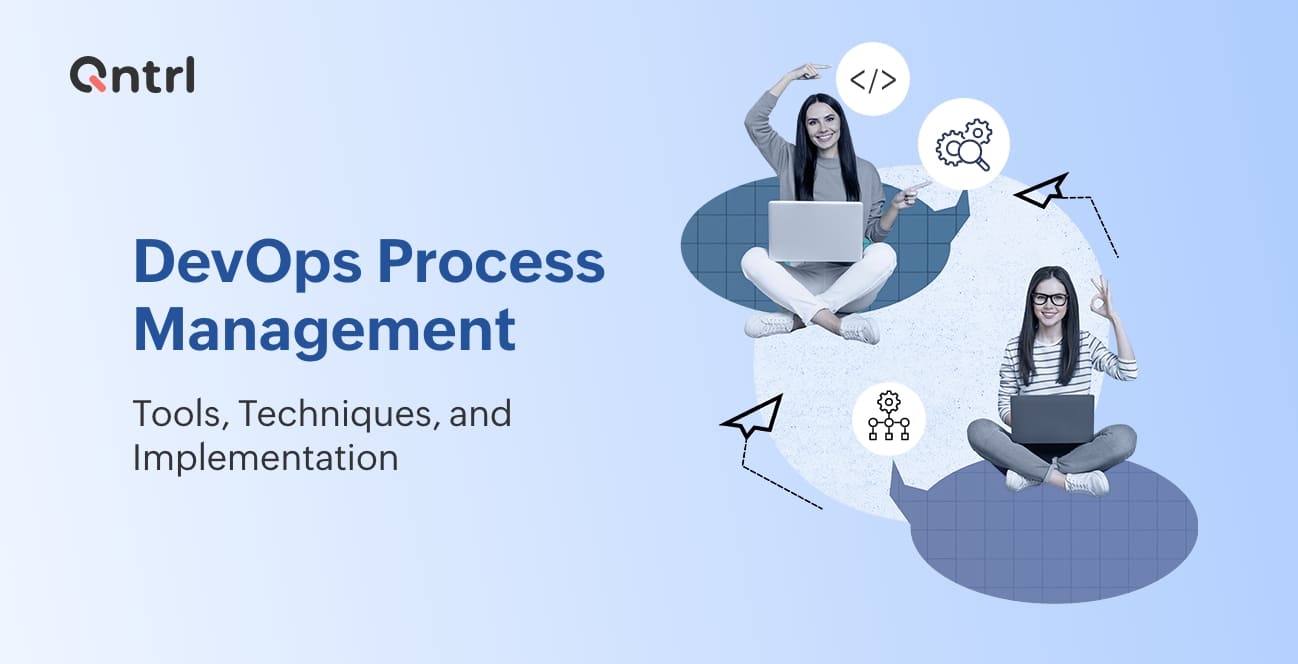DevOps Process Management: Tools, Techniques, and Implementation

DevOps thrives on speed, automation, and continuous improvement—but without structured workflows, teams end up facing:
❌ Deployment Delays – Manual approvals slow down CI/CD pipelines.
❌ Incident Management Chaos – No clear ownership leads to longer downtime.
❌ Compliance Issues – Unauthorized changes increase security risks.
❌ Workflow Inefficiencies – Redundant tasks and lack of automation waste valuable time.
This is where Business Process Management (BPM) for DevOps becomes a game-changer. By automating workflows, standardizing approvals, and ensuring real-time visibility, BPM ensures that your DevOps processes run like a well-oiled machine.
What is BPM in DevOps?
Business Process Management (BPM) helps DevOps teams design, automate, and optimize workflows. It eliminates bottlenecks in CI/CD, streamlines ITSM processes, and ensures compliance without slowing down innovation.
With BPM, DevOps teams can:
✅ Automate Software Deployments – Trigger CI/CD pipelines without manual approvals.
✅ Improve Incident Resolution – Assign, track, and escalate tickets efficiently.
✅ Ensure Compliance & Security – Enforce governance with role-based approvals.
✅ Enhance Collaboration – Provide real-time visibility into workflows across teams.
✅ Monitor & Optimize – Use analytics to continuously refine DevOps processes.
How BPM Optimizes DevOps Workflows
Automating CI/CD Pipeline Management
A BPM solution removes manual dependencies by automating approvals, build processes, and deployments. Instead of waiting for email confirmations or Slack pings, teams can implement predefined rules that trigger actions based on conditions.
💡 Example: When a developer commits code, BPM can automatically initiate:
A code review process before merging to the main branch.
A security scan workflow to check for vulnerabilities.
A deployment approval process that notifies the release manager.
Streamlining Incident Management & Escalations
Handling IT incidents manually leads to longer downtimes, poor accountability, and frustrated teams. BPM automates ticket assignment, escalations, and follow-ups, ensuring quick resolution.
💡 Example: If a server crashes, BPM can:
Automatically create a support ticket.
Assign the incident to the right DevOps engineer based on workload.
Escalate to senior engineers if not resolved within a set SLA.
Notify stakeholders via Slack or email about progress.
Enhancing Change Management & Governance
Every DevOps team needs clear processes for handling code changes, security patches, and infrastructure updates. A BPM tool ensures every modification follows a structured approval process, reducing the risk of unauthorized changes.
💡 Example: For a critical production update, BPM can:
Require multi-level approvals before deployment.
Automatically track all changes for compliance audits.
Ensure rollback procedures are documented and accessible.
Increasing DevOps Visibility & Collaboration

Every DevOps team needs clear processes for handling code changes, security patches, and infrastructure updates. A BPM tool ensures every modification follows a structured approval process, reducing the risk of unauthorized changes.
💡 Example: For a critical production update, BPM can:
Require multi-level approvals before deployment.
Automatically track all changes for compliance audits.
Ensure rollback procedures are documented and accessible.
How to Implement BPM in DevOps
Step 1: Identify Workflow Bottlenecks—Where do manual delays happen?
Step 2: Define Process Automation Rules—Set conditions for approvals, escalations, and deployments.
Step 3: Integrate with DevOps Tools—Connect with CI/CD platforms.
Step 4: Monitor & Optimize—Use real-time analytics to refine workflows.
Qntrl: The BPM Solution for DevOps Teams
If you're looking for a BPM tool that orchestrates DevOps workflows seamlessly, Qntrl is the perfect fit.

With Qntrl, you can:
- Automate CI/CD approval workflows and eliminate deployment delays.
- Streamline incident response and escalation processes for faster resolution.
- Gain end-to-end visibility into software releases and ITSM workflows.
- Ensure governance and security compliance with role-based access controls.
- Integrate with your DevOps stack, including Jenkins, GitHub, Jira, and more.
What’s your biggest DevOps process challenge? Drop a comment below!
Enjoying your reading?
Enjoy organization and visibility too!
Qntrl can help you organise, control and improve production and projects in your team.







